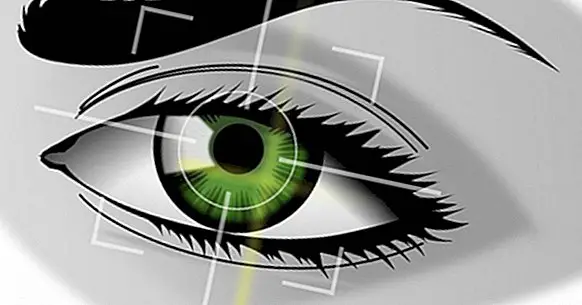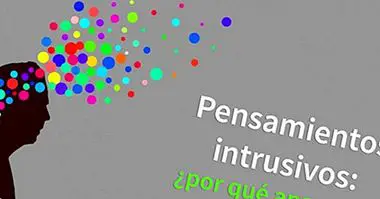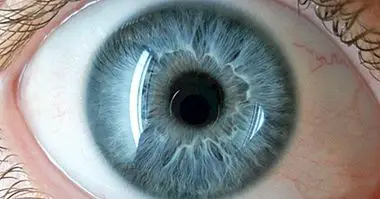The power of looking at each other's eyes: playing with the laws of attraction
Humans are one of the few species of mammals in which a relatively large brain is combined with a great capacity to process visual stimuli. We spend the day by day paying attention to the scenes that are happening before our eyes, imagining concrete images and unconsciously judging the non-verbal language of others, much of which is visual.
The visual experience, the one we like the most
In our free time we love to satisfy our needs to be entertained through our eyes, and in order to see things we are able to see a succession of television ads, something that from a rational perspective only benefits the advertiser.
Our brain is able to pick up this apparent chaos of visual information and make sense , because it is made to adapt to a massive amount of data and prioritize certain aspects over others. Not for nothing about one third of the human brain is dedicated to processing visual information. It can be said that the look is one of our best weapons of adaptation to the environment.
But there is a context in which the gaze is not simply a data collection tool. What happens when, instead of looking for important information in a continuous stream of figures and textures in movement, a look meets another look? What processes are triggered when someone fixes their eyes on ours and vice versa?
Creating intimacy from the look
The visual contact seems to be closely related to the creation of intimate affective bonds and to the selection of possible partners. One study, for example, points out that couples who are linked through a romantic relationship maintain eye contact for 75% of the time they spend talking to each other, while the normal thing in the rest of the cases is to dedicate to this from 30% to 60% of the time. Further, the better the quality of the relationship (measured through questionnaires), the more the members that compose it tend to look at each other .
But a corresponded look is not a simple symptom of intimacy: it can also be a factor that contributes to creating that climate of intimacy. In one experiment, a series of 72 people, unknown to each other, were placed facing each other, and they were asked to look each other in the eye continuously for two minutes. The couples who followed these instructions to the letter showed a greater feeling of affection and romantic love towards the other person, something that did not happen to the same extent if, instead of looking into each other's eyes, they looked at the other person's hands or concentrated on counting the blinking of the other person.
Why does this happen?
The eyes are one of the parts of the face that we focus on the most when we interact with someone. This, which seems natural and even obvious, it is a rarity within the animal kingdom . However, our species has evolved to have extraordinary control of the muscles of the face that are around the eyes, and we are also especially good at recognizing the nuances and subtleties behind these small movements. That's why, to meet someone, this is one of our favorite parts on which to focus our attention, in addition to the mouth.
However, when we are not only looking at someone's eyes but that someone looks back at us, the interaction changes completely when the Mind Theory comes into play, which can be briefly defined as our ability to think about what is going on. it passes through the mind to the other person, which may be based on what she thinks passes through the mind to us, etc.
In a way, the fewer barriers that are put to this transmission of information in real time in the form of a sustained and corresponded look by the other person, the more intimate it becomes in context.
Between honesty and lying
When we meet with a look that confronts us, not only we see some eyes, but the possible image that we are giving mixed with the information that the other person reveals to us . This is why visual contact is a phenomenon in which both insecurity and attunement and the creation of an intimate context can manifest themselves.
In the negotiation between the information that is obtained from the other and that which is given about oneself, maintaining visual contact comfortably is a symptom of comfort and safety in what is said and done , whereas the opposite happens with aversion.
In fact, already in groups of 6-year-old children, a tendency has been found to associate visual contact with honesty and aversion of the other's gaze with lying, while those that look away could do so because they do not have the capacity to focus your attention on the look of the other and at the same time maintain a false image of yourself that seems coherent.
Spontaneity is rewarded
Holding your eyes to someone seems to have a relatively high cognitive cost (deconcentrates us), and if we also do this deliberately and not subconsciously, the difficulty of maintaining an agile and stimulating dialogue may decline. In this way, people who express their affinity with someone through spontaneous and not entirely planned reciprocal looks have an advantage over those who try to maintain eye contact as their was an imposition.
Definitely, those people who have less reason to lie (verbally or gesturally) about themselves, are able to make the mutual eye contact go longer . We can conclude from this that to benefit from the power of holding the look is not enough to try to put it into practice, but it must go hand in hand with a well-worked self-esteem and the belief that what we can offer the other person will serve for mutual benefit.
Bibliographic references:
- Einav, S. and Hood, B. M. (2008). Tell-tale eyes: children's attribution of gaze aversion as a lying cue. Developmental Psychology, 44 (6), pp. 1655 - 1667.
- Kellerman, J., Lewis, J and Laird, J. D. (1989). Looking and loving: the effects of mutual gaze on feelings of romantic love. Journal of Research on Personality, 23 (2), pp. 145-161.
- Rubin, Z. (1970). Measurement of romantic love. Journal of Personality and Social Psychology, 16 (2), pp. 265-273.



















